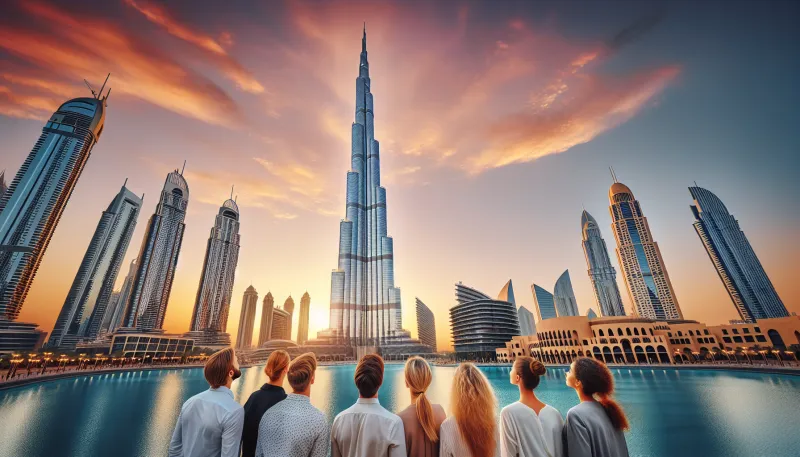
Fascinating facts to know about the Burj Khalifa
The Burj Khalifa, a towering marvel located in Dubai, United Arab Emirates, stands as the tallest building in the world. Beyond its dizzying height, this architectural icon embodies advanced engineering, luxury, and cultural symbolism. In this article, we explore ten fascinating facts that reveal why the Burj Khalifa captivates people around the globe.
- Record-breaking height
- Construction timeline and challenges
- Architectural design inspiration
- Elevators and vertical transport
- Luxury residential and commercial spaces
- Observation decks with panoramic views
- Sustainability features
- Lighting and nighttime spectacle
- Symbolic significance
- Record-setting events and milestones
- Conclusie
Record-breaking height
The Burj Khalifa reaches an astounding height of 828 meters (2,717 feet), making it the tallest man-made structure on Earth. It surpasses the previous record-holder by more than 200 meters. This incredible height allows it to dominate Dubai’s skyline and be visible from miles away.
Construction timeline and challenges
Construction of the Burj Khalifa began in 2004 and was completed in 2010. The project faced numerous engineering challenges including extreme wind forces and the tricky desert climate. To address these issues, engineers used a unique 'buttressed core' structural system to ensure stability.
Architectural design inspiration
The design of the Burj Khalifa draws inspiration from the regional cultural heritage. Its shape is modeled after the Hymenocallis flower, which is native to the region. The triple-lobed footprint and stepped terraces create a graceful and futuristic form that enhances both aesthetics and function.
Elevators and vertical transport
The Burj Khalifa houses some of the world’s fastest and longest-traveling elevators. Elevators travel at speeds of up to 10 meters per second, whisking visitors from the ground to observation decks on the 124th and 148th floors within minutes, providing breathtaking views along the way.
Luxury residential and commercial spaces
Inside the Burj Khalifa, there are luxurious private residences, corporate suites, and the Armani Hotel Dubai. The interiors represent top-tier comfort and elegance, featuring lavish designs and state-of-the-art amenities.
Observation decks with panoramic views
The tower features multiple observation decks, notably the one on the 148th floor, known as 'At the Top SKY,' which is currently one of the highest observation decks in the world. Visitors can experience 360-degree views of Dubai’s urban landscape and the surrounding desert.
Sustainability features
Despite its massive scale, the Burj Khalifa incorporates several sustainability and energy-efficient technologies, such as a condensate collection system that harvests water from air conditioning units, providing millions of gallons of recycled water annually for landscaping.
Lighting and nighttime spectacle
At night, the Burj Khalifa transforms into an illuminated spectacle with a dazzling LED light display covering its facade. These lights are used for celebrations and events, from New Year’s Eve fireworks to national holidays.
Symbolic significance
Beyond being a building, the Burj Khalifa symbolizes Dubai’s ambition, innovation, and rapid development. It stands as a global icon representing human achievement and the future of urban living.
Record-setting events and milestones
The tower holds multiple records besides height: the highest outdoor observation deck, the tallest service elevator, and the longest travel distance elevators. It has also hosted unique events like high-altitude BASE jumps and vertical marathons.
Conclusie
The Burj Khalifa is much more than just the tallest building in the world; it represents a pinnacle of engineering, design, and visionary ambition. Its record-breaking features, luxurious spaces, and symbolic power continue to inspire millions. Whether admired for its aesthetics or technical brilliance, the Burj Khalifa remains an architectural marvel redefining possibilities for future skyscrapers.
Business and lifestyle journalist

